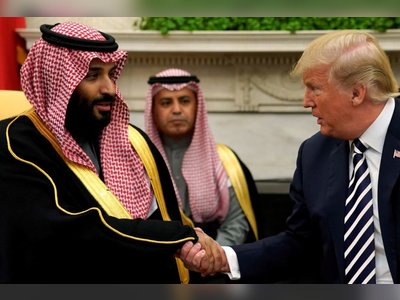Saudi Arabia’s Solar Surge Signals Unlikely Shift in Global Oil Powerhouse
Despite its fossil-fuel dominance, Riyadh is rapidly scaling solar power to meet its Vision 2030 target of 50 percent renewables.
Saudi Arabia is forging ahead with a sweeping expansion of clean energy at a pace few would have expected from the world’s largest oil exporter.
Vast arrays of solar panels now glitter across its desert terrain and new contracts are piling up as the kingdom races to meet the target of sourcing half of its electricity from renewable sources by 2030.
At the heart of the effort is a commitment to solar: the kingdom, which until recently relied almost exclusively on fossil fuels for power generation, has dramatically increased its ambitions and projects.
Authorities now envision some 100-130 gigawatts of combined solar and wind capacity by the end of the decade, with solar making up the lion’s share.
One landmark deal underscores the shift.
A consortium led by Saudi utilities giant ACWA Power and in partnership with Saudi Aramco’s power unit has signed an US$8.3 billion investment to build fifteen gigawatts of solar and wind projects across four regions of the kingdom.
These agreements support the broader plan to hit the 50 percent renewables mark by 2030 and reach net-zero emissions by 2060.
Market data further illustrate the growth.
The country’s solar-energy solutions market is projected to rise from US$2.5 billion in 2024 to US$7.72 billion by 2030, a compound annual growth rate of some 20.5 percent.
At the same time large-scale renewable tenders and factory developments are under way to localise manufacturing and storage.
Economically the transition makes sense for the kingdom.
With abundant sunshine, cheap land and rapidly falling solar and battery costs—including import-driven panel price declines from China—solar power is now one of the most cost-competitive forms of electricity generation in the region.
Freed from burning domestic oil for power, Riyadh can redirect crude exports to international markets.
Still, analysts caution that the scale of the challenge is immense.
As of 2024, renewables made up only a small share of total generation, and energy consumption continues to grow rapidly in a country driven by cooling, desalination and industrial expansion.
Some observers say that while the direction is clear, reaching the 50 percent goal will require sustained momentum and significant deployment upgrades.
In many ways Saudi Arabia’s strategy illustrates an evolving global energy dynamic: a petrostate that once resisted climate-action efforts is now positioning itself as a major player in the clean-energy future.
Whether it meets its bold targets remains to be seen—but the message is unmistakable: even oil powerhouses believe the future is solar.
Vast arrays of solar panels now glitter across its desert terrain and new contracts are piling up as the kingdom races to meet the target of sourcing half of its electricity from renewable sources by 2030.
At the heart of the effort is a commitment to solar: the kingdom, which until recently relied almost exclusively on fossil fuels for power generation, has dramatically increased its ambitions and projects.
Authorities now envision some 100-130 gigawatts of combined solar and wind capacity by the end of the decade, with solar making up the lion’s share.
One landmark deal underscores the shift.
A consortium led by Saudi utilities giant ACWA Power and in partnership with Saudi Aramco’s power unit has signed an US$8.3 billion investment to build fifteen gigawatts of solar and wind projects across four regions of the kingdom.
These agreements support the broader plan to hit the 50 percent renewables mark by 2030 and reach net-zero emissions by 2060.
Market data further illustrate the growth.
The country’s solar-energy solutions market is projected to rise from US$2.5 billion in 2024 to US$7.72 billion by 2030, a compound annual growth rate of some 20.5 percent.
At the same time large-scale renewable tenders and factory developments are under way to localise manufacturing and storage.
Economically the transition makes sense for the kingdom.
With abundant sunshine, cheap land and rapidly falling solar and battery costs—including import-driven panel price declines from China—solar power is now one of the most cost-competitive forms of electricity generation in the region.
Freed from burning domestic oil for power, Riyadh can redirect crude exports to international markets.
Still, analysts caution that the scale of the challenge is immense.
As of 2024, renewables made up only a small share of total generation, and energy consumption continues to grow rapidly in a country driven by cooling, desalination and industrial expansion.
Some observers say that while the direction is clear, reaching the 50 percent goal will require sustained momentum and significant deployment upgrades.
In many ways Saudi Arabia’s strategy illustrates an evolving global energy dynamic: a petrostate that once resisted climate-action efforts is now positioning itself as a major player in the clean-energy future.
Whether it meets its bold targets remains to be seen—but the message is unmistakable: even oil powerhouses believe the future is solar.








